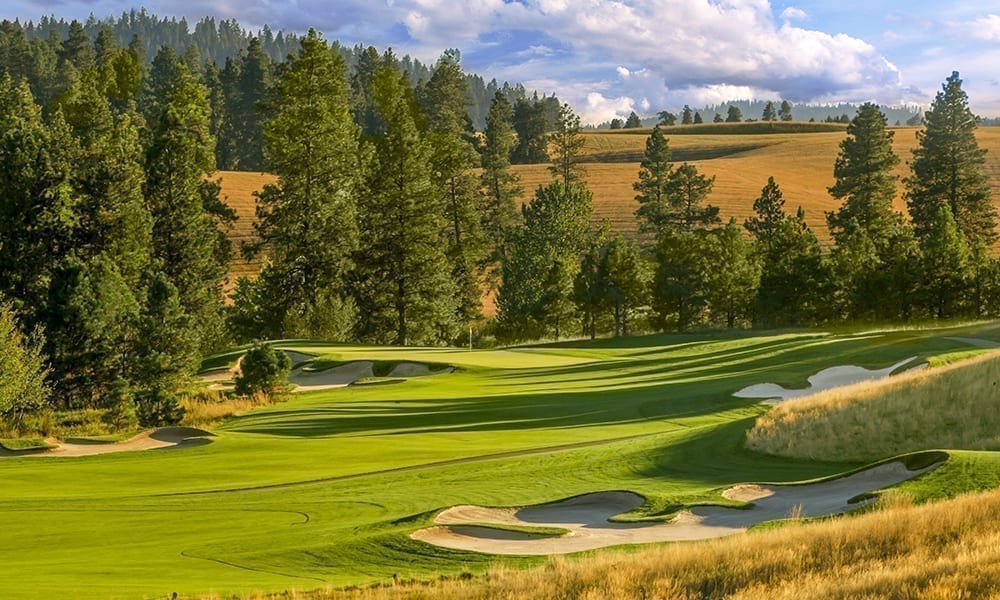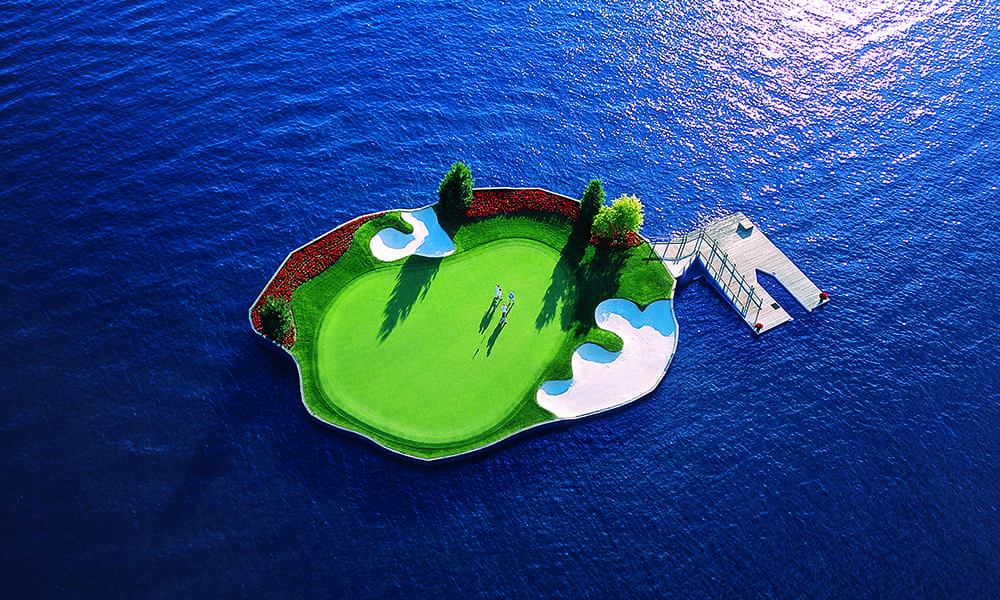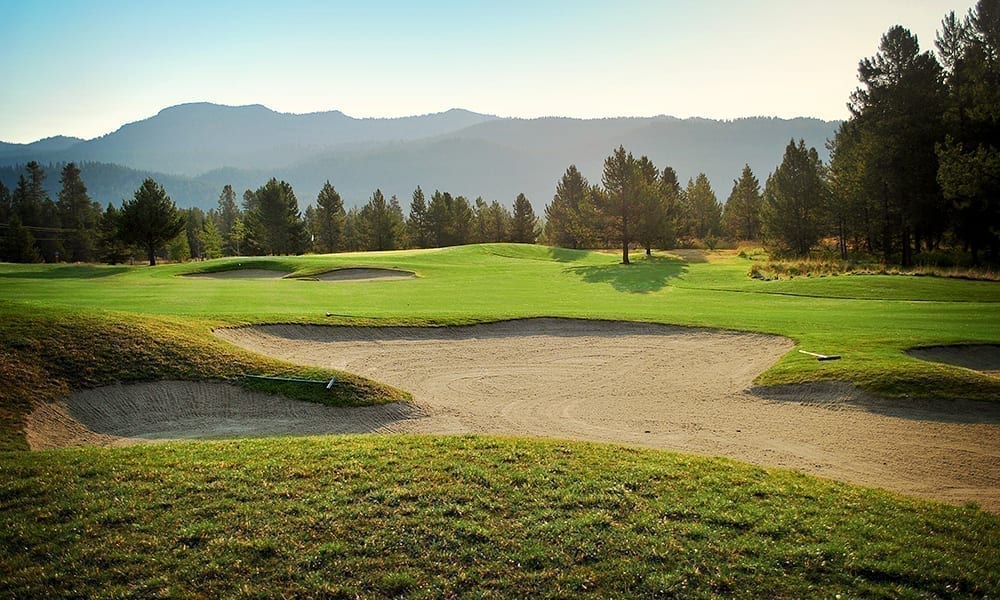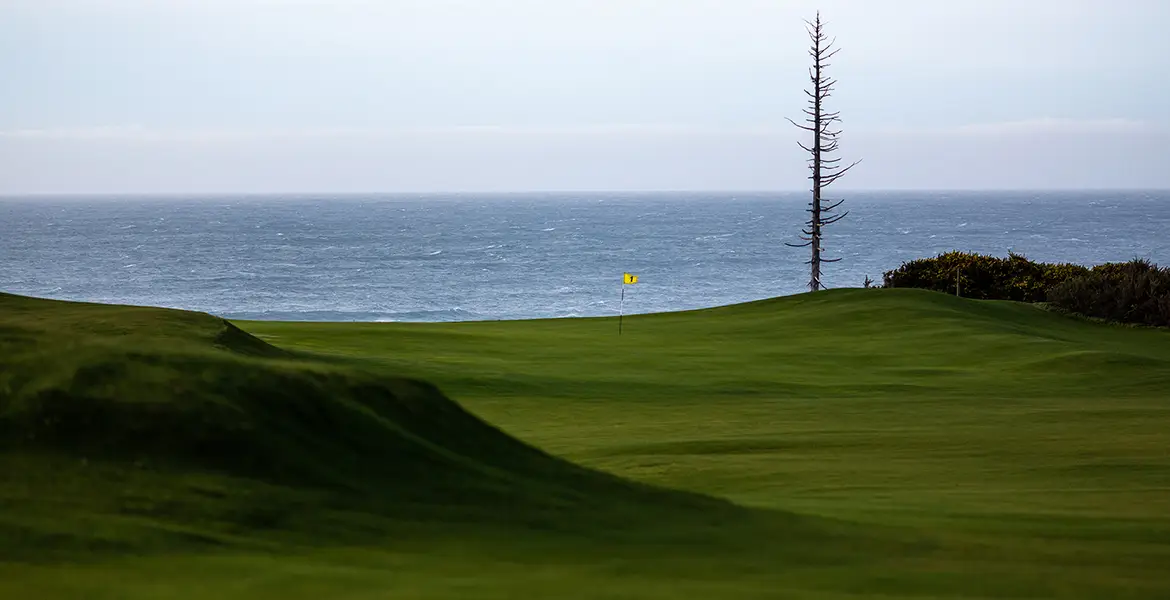The Gem State features majestic mountains, national forests, rushing streams, and surprisingly affordable green fees—making Idaho a diamond in the rough for public golf
Greg Bullock makes the 350-mile, seven-hour drive from his home in Nampa, Idaho, to Circling Raven at least twice a year.
“It’s totally worth it,” he says. “It’s like nowhere else I know—a combination of forest, marsh, prairie, and a little links, and Gene Bates takes you on an amazing journey through it all.”

When Bullock, a former college golfer now in his mid-60s, tried to build his own course back in the early 2000s, he called Bates after playing the newly opened Circling Raven for the first time. Back then, before a number of big-budget private clubs were built, many agreed with Bullock that Circling Raven—part of the Coeur d’Alene Casino Resort—was the Gem State’s best. Today, nearly two decades later, it’s still high up the list, and Bullock likes to say that golf is his home state’s “secret treasure.”
Bates beat four other architects for the Circling Raven job by proposing a routing his competitors had apparently deemed too risky and that would require more than a little ingenuity, patience, money, and serendipity to complete. A tunnel had to be built under the railroad that cut through the middle of the course. Bates had to go to North Carolina to find a bridge builder sufficiently skilled to span 25 acres of wetlands. And the steep incline at the 6th hole would need softening, which Bates managed by blasting 40,000 square feet of rock—an expense the casino-hotel o set by using the rock as fi ll for the clubhouse parking lot.
Circling Raven covers a beguiling mix of landscapes and, because you can be several miles from the nearest house, the feeling of peace and seclusion is very real. It justifiably ranked inside America’s top 100 public courses for almost 15 years, while its peak summer green fee remained under $100 until 2018; now at $109, it’s still refreshingly affordable. Exciting times are ahead for the course: This year it hosts the Symetra Tour for the first time, and in two years a Bates-designed nine-hole course—Twisted Earth—will be added.
The Coeur d’Alene Casino is actually 25 miles south of the city of the same name and the Scott Miller-designed course at the Coeur d’Alene Resort (not to be confused with the Casino-Resort; they are separate entities). The 30-year-old layout’s main attraction, besides superb conditioning and four other exceptional short holes, is the 2,300-ton, 15,000-square-foot floating green of the 14th hole, which golfers reach by a dinky little boat called “Putter.”

When the hole is set all the way back at 218 yards, it’s a fairly daunting prospect and I’ll admit to missing the generous target more times than I’ve hit it. I can attest missing that green can really spoil your day.
Though you could spend some quality time playing golf in and around Coeur d’Alene—especially if you can wrangle tee times at the private Black Rock, Rock Creek, and Gozzer Ranch, all of which look out over the lake—you actually should take a quick detour 50 miles north to the Idaho Club, just east of the charming town of Sandpoint. A private property itself, the golf course at the Idaho Club is, in fact, open to the public following the block of members’ tee times in the morning and, though it’s not exactly a secret, the club doesn’t make much noise about this accessibility. Not surprisingly, given photographs of the course, it’s a very popular tee time with Idahoans who relish the opportunity of taking on the Golden Bear.
Jack Nicklaus redesigned the old Hidden Lakes course here in 2008, mixing a slightly more elevated front nine with a flatter, narrower, prettier back nine on which the serpentine Pack River comes into play on several holes. Make no mistake though, while the setting may be glorious and apt to soften the blow of consecutive bogeys, the golf here is tough. Pick your tees wisely and you’ll have a day to remember; choose a set that demands too much of your 220-yard floaters, however, and you’ll likely struggle.
Idaho boasts 114 mountain ranges (primarily the Bitterroot, Salmon River, and Rockies), seven national forests (trees cover more than 21 million acres), and over 2,000 lakes. The journey to the state’s other top public courses passes through much of this superlative terrain.

It’s a four-hour drive south through the Saint Joe, Wallowa-Whitman, and Payette National Forests from Circling Raven to the lakeside city of McCall. A couple of minutes from Lake Payette is the absolutely stunning Roger Packard/Andy North-designed Whitetail Club, which is part of the private community of the same name that saves a limited number of tee times for guests of the Shore Lodge in town. The course is fairly flat save for a few minor undulations, and there are some heavily forested sections as well as more exposed parts. All of it is exceptionally well kept, pleasing to the eye, and enjoyable.
Another 10 miles south is Jug Mountain Ranch, which opened in 2004 and was designed by Don Knott. The course covers part of the 2,000-acre ranch owned by the Carey Family, whose patriarch co-founded Advanced Micro Devices. With lakes, creeks, forested areas, sparser sections that almost resemble British heathland, and the pine-covered slopes to the east, Jug Mountain is a wonderful round you’ll want to repeat.
Four more hours in the car fly by, crossing the Sawtooth Range and piercing the Sawtooth National Forest en route to Ketchum and the Sun Valley Resort, America’s first winter destination resort, opened in December 1936. Shortly after welcoming its first guests, Sun Valley added a nine-hole golf course, with a second nine opening in the early 1960s.
Oil billionaire Earl Holding bought the resort in 1977 and quickly hired Robert Trent Jones Jr. to redesign the Sun Valley Golf Course, which reopened under the name Trail Creek. Knott added the spectacular White Clouds Nine on more elevated, exposed ground west of the original course in 2008 and, in 2011, the Sun Valley Company purchased the Jones-designed (Trent Sr. and Trent Jr.) Elkhorn Golf Course on the south side of Dollar Mountain. While it and the similarly attractive Trail Creek courses remain extremely popular, you’ll find many who insist Knott’s nine is hard to beat. As its name suggests, White Clouds gives a sense of playing golf in the sky: There’s a minor scattering of hardy trees, but you’re up above the treeline so don’t be looking for any shelter from the wind.

Leaving Sun Valley is never easy, but you’re just 90 minutes from Twin Falls, the principal town of southern Idaho’s Magic Valley. The private Francis James-designed Blue Lakes Country Club on the north side of the Snake River is the coveted tee time here, but a round at Canyon Springs on the other side of the water is a fine alternative.
The course was developed by agribusiness magnate Joe McCollum, who hired Max Mueller to build the first nine holes in 1973; Bob Baldock built the second nine, which opened 10 years later. Canyon Springs is quite possibly the state’s best value at just $38 a round on a summer weekend. That sort of green fee might suggest an uninviting, unkempt, inner-city municipal, but with waterfalls crashing down the canyon walls and sterling views down the Snake River to the IB Perrine Memorial Bridge, Canyon Springs is anything but.
After a spell in the high desert, it’s a three-hour haul east to Driggs, where David McLay Kidd took a mostly flat, featureless site and designed the private Tributary (originally Huntsman Springs), a course so endlessly interesting it surely ranks as one of the country’s finest examples of great golf on less-than-ideal ground.
David Druzisky did much the same five miles away at the public Links at Teton Peaks. Opened in 2000, the Links plays over a similarly level site, this one perhaps even more desolate, even bleak.

“Other than the ridge running through the far north end of the property, the site was completely flat,” says Druzisky. “A benefit of flat ground, though, is that you can place bunkers and other elements per your liking to create angles, movement, and strategic fun. I laid everything out in the field as we went as I figured it would be a great place to hang out for a while.”
He’s not wrong. If you’re anything like me, you’ll appreciate the stark beauty (the distant Tetons form quite the backdrop) and enjoy hanging out for a while yourself. You are cut off from the rest of the world—just you in a magical place with a handful of fellow golfers.
That faraway feeling happens a lot on Idaho’s fairways. And I love it.
What is your favorite golf course in Idaho?






